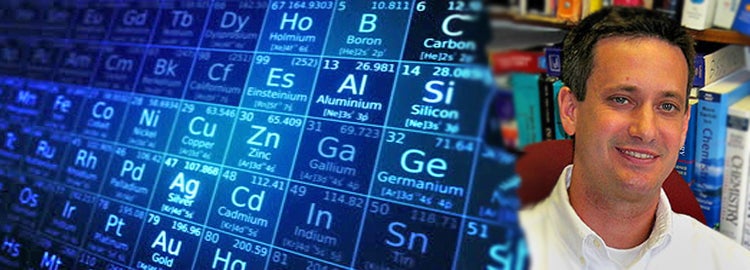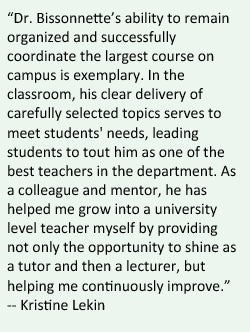Carey Bissonnette: Clicking with Students
|
 |
|
Dr. Carey Bissonnette |
Written by Hina Ahmed, Special Projects (Teaching Stories), CTE.
Carey Bissonnette’s teaching philosophy is rooted in the belief that learning should be an interactive and satisfying experience. Instructors, he says, should strive to inspire, engage and create passion in learners, so they can take on intriguing problems. This philosophy developed over Bissonnette’s twenty years of teaching Chemistry at Waterloo, and crystallized several years ago when he attended a presentation by Ken Bain, author of What the Best College Teachers Do, which left a lasting impression on his philosophy as an instructor.

Using example-driven lecturing, Bissonnette sees the value in using a modern version of chalk and talk. He solves chemistry problems out loud and in front of his students. Sometimes he ends up making a mistake, only to have it pointed out by a diligent student during his lecture. “This then becomes a learning opportunity,” says Bissonnette, “And students come to understand that it is okay to make mistakes, in order to truly understand concepts.” By dedicating ample time to teaching critical concepts to his students, Bissonnette builds a solid foundation from which his students can solve more complex chemistry problems. As a former student of Bissonnette puts it, “He is not only the best chemistry instructor you could ask for, but he is also a supportive role model.”
Bissonnette has taught first-year students for many years, and does not want to stop. He understands that the first year of university is an unnerving and transformative point in students' lives. This makes teaching them a challenge. At the same time, their eagerness to acquire knowledge makes teaching first-year students especially energizing and rewarding. This genuine care for students is also what characterizes his role as Teaching Fellow for the Department of Chemistry: he wants to ensure that the undergraduate experience at the Waterloo is an excellent one.
Read more Teaching Stories
More Resources
CTE has developed more than 100 Teaching Tips. Each one is a succinct document that conveys useful ideas and practical methods for effective teaching. Some of the Teaching Tips that are relevant to the strategies mentioned in this Teaching Story include the following:
Keyword: learning technologies